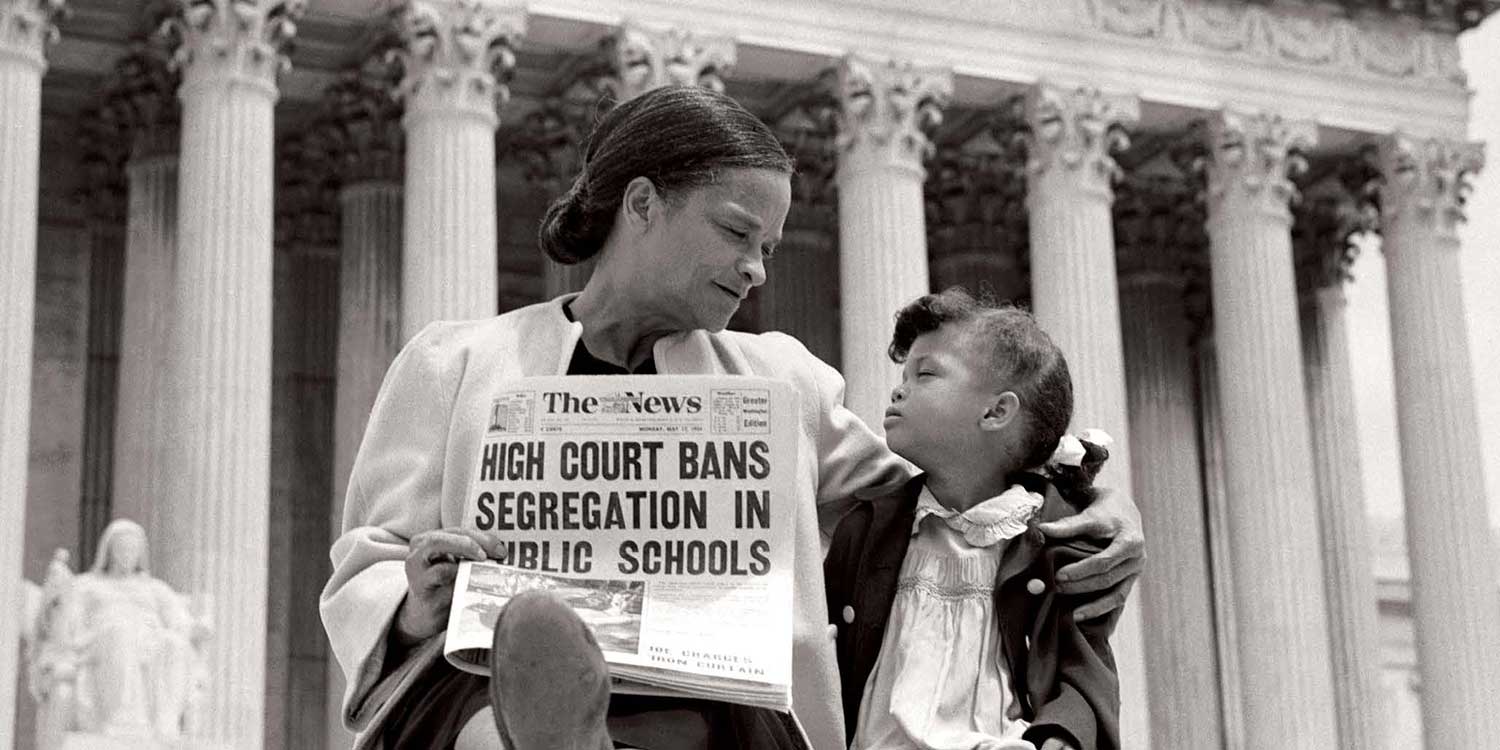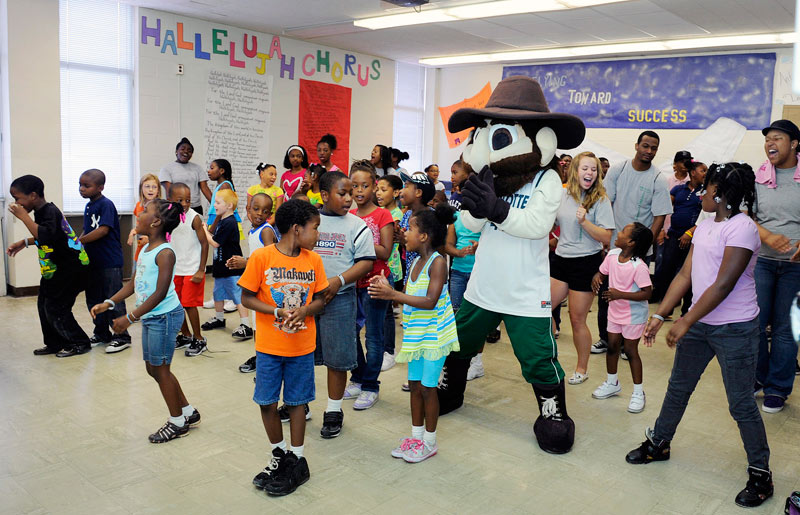In honor of the 60th anniversary of the 1954 Brown v. Board case, it is important to continue the conversation on desegregation and race. For numerous reasons, Zora Neale Hurston represents someone “unconventionally brilliant” as it pertains to race matters. Not because her ideologies are necessarily correct, but because her views (as demonstrated through her literature) stir the proverbial “melting pot” of racial mixture.
Zora Neale Hurston’s views on race were rooted in the sincere belief that Southern Blacks’ way of life was neither inferior nor simple. This was quite uncommon for the literary heroes of the “indignant generation,” a term Lawrence Jackson (2011) uses to describe the decades between 1934 – 1960. Nestled between the Harlem Renaissance and the Civil Rights Movement, literary figures such as Robert Hayden, Gwendolyn Brooks, Lorraine Hansberry, and Henry Dumas were some of the many writers who contributed to the Black literary cannon during this somewhat “awkward” time period.
Throughout Hurston’s literature, the segregated South contains intricate complexities of relationship, love, sustainability, and its own form of “progression” that often remains overlooked. In Their Eyes Were Watching God, for example, Hurston situates her novel – not in the midst of racial turmoil – rather, in her hometown of Eatonville, Florida. In Mules of Men, Hurston describes Eatonville as “… a city of five lakes, three croquet court, three hundred brown skins, three hundred good swimmers, plenty guavas, two schools, and no jailhouse.” Although Eatonville was small, like many other pocketed Negro towns of which there were about sixty documented during the mid twentieth century, there was vitality in the stories and experiences from these moderately independent, segregated cities (Patterson, 2005, p. 65). Eatonville was described by Hurston as a “Negro Town.” These all-Black communities or Negro Towns, “… [were] one of the many responses to slavery and the terrifying world of Jim Crow. In autonomous or semi-autonomous enclaves, Black southerners sought ways to turn segregation to their advantage and build a ‘nation within a nation’… and live in relative harmony in a segregated world” (ibid). On the other hand, comparable writers during the time, such as Richard Wright, Ann Petry, and Lorraine Hansberry, each published work that involved White conflicts and the Black migration to the North for improved social mobility (Jackson, 2011). These were valid – and real – experiences. The surrounding political progressive movement expressed a desire among many Blacks, to be socially integrated. Blacks in the South were often portrayed in literature under the ominous loom of lynching threats and race mobs. However, Hurston was different. Most of Hurston’s publications featured the inward struggle of Blacks, situated within their own nestled communities (Peters, 1998). Black characters did not necessarily have to migrate to the North for a substantial story; the South was good enough. Many of Hurston’s novels had an all-Black cast in which the characters dealt with internal conflict. For this reason, Hurston became an “outsider” among her literary peers who chose to deal with racism and racial segregation directly. Richard Wright was one of her staunchest critics (see – Wright’s “Between Laughter and Tears”).
Throughout Their Eyes Were Watching God, Hurston enforces the importance of the segregated South as an adequate setting for the novel. Unlike many other writers during Hurtson’s time, the South provided a unique perspective that gave authority and autonomy to Black interactions (Patterson, 2005). Within the first scenes of the novel, readers glean into the complexities of even an all-Black cast of characters. Between the congenial relationship with Janie and Pheoby, the spitefulness of watchful neighbors, and even the introspection of Janie’s thoughts, Hurston proved that Black literary autonomy was possible for a meaningful story. Unlike other authors – especially during the mid-twentieth century time period – who relied on Black and White conflict:
“…Hurston’s characters are a clever, dignified, proud people who are spunky enough to parry harsh insults from other Blacks and glaring disrespect from Whites. Collectively they shared an ethos by which their souls lived, readily defended their humanity, and shaped and controlled, more than is commonly recognized, their own world and destiny” (Glassman & Seidel, 1991, p. 38).
Hurston’s Their Eyes Were Watching God contrasted the surrounding beliefs about the South being a place of horror and racism. Although true, the story of Janie, Nanny, Joe, and Tea Cake, did not explicitly involve blatant racism. One could argue that their impoverished state was the result of institutional racism, but there was no race riot, no lynch mob, or any crooked policeman. This technique disappointed some and enraged others, because in appeared naïve to ever suggest that the South was a utopia for Blacks (Patterson, 2005).
The plot’s ability to sustain without lynch mobs and riots, as portrayed in other Southern literature, demonstrates how Hurston rejected that Black people were defined by their surrounding conditions (Patterson, 2005). In fact, Hurston’s ability to maintain a story without frequent Black and White interaction often served as a fault between her readers. “Hurston’s portrait [of Jim Crow South] so diminished the role of White racism that at times her contemporaries branded her a conservative in denial of reality” (Patterson, 2005, p. 45). However, when considering Hurston’s personal views regarding the Brown vs. Board of Education decision years later (as mentioned in the previous post), it appears as if Hurston is intentional and deliberate in her unique approach to Black segregation, race relations, and the complexities of the Black community.
Hurston’s literaturerisked her isolation from the Black community and other Black literary figures because they believed it was almost “too introspective.” This is because the Black community, from Hurston’s viewpoint, is important on its own. But perhaps the most important aspect of Hurston’s Their Eyes Were Watching God is the story of love. Known as the first Black love story, Hurston achieves this once again, in an all-Black, segregated environment. Janie’s conflict with her Nanny, two former husbands, and the surrounding Eatonville community, seemed primitive and underdeveloped by other writers (Jackson, 2011). But supporters of Hurston agree, her focus on Black life was intentional, and perhaps the most signifying message of independence and progression. Hurston’s ability to create significant work, without centering the plot on White racism and the racial unrest of the South, was perhaps too advanced for Hurston’s time. Although Hurston failed to gain support of many other Black writers in Jackson’s Indignant Generation, there is no doubt that Hurston created meaningful literature that was independent of White heroes, White villains, and direct interactions with White racism.
So what does this mean? Especially within 21st century contexts? The discussion must be couched much broader than literature. Contemporizing her theories into recent news articles, educational issues (see previous post), the justice system, and U.S. Census statistics (poverty, urbanization, etc.), Hurston’s stance on race brings to question – once again – the role of segregation and desegregation. Is segregation effective? Is inclusion dangerous? Is segregation dangerous? Is inclusion effective?
“They lived from the inside out, fashioning and developing a value system that Whites could neither constrict or control. For them, as for Hurston, [Black] life was more than a response to White injustice. They lived by their own yardstick and measure of their own worth, while rejecting White definitions for their humanity and capabilities… Considered escapism by some critics and politically naïve by others, this worldview, while incomplete and unbalanced in an industrialized world, was tailored to the needs of the Black masses who lacked political power.” (Glassman & Seidel, 1991, p. 38-39).


